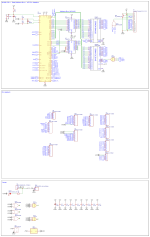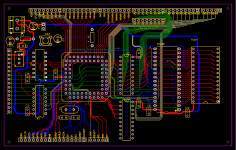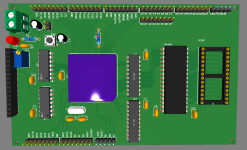80186 Enthusiast
Experienced Member
- Joined
- May 18, 2023
- Messages
- 53
In my last post about my 80188 Prototyping Computer project, I realized I was getting way to ambitious for my project. I'd like to thank the following users who helped me see the errors of my ways:



No more Multi-Master Bus, No more Intel 8288 and 8289. Just a simple barebones 80188 System board with memory that also doubles as a Breakout board as all of the CPU pins are present. This design is intended to be used with a breadboard where I'll test new hardware on with some jumper cables.
as for the hardware I'll be testing with this board, Here's a small List:
I'll make another post that showcases what I want for the future of this project sometime soon.
Thank you for reading my post, any help and advice will be thanked and appreciated in advance!
- Eudimorphodon (Thx for the sanity check)
- daver2



No more Multi-Master Bus, No more Intel 8288 and 8289. Just a simple barebones 80188 System board with memory that also doubles as a Breakout board as all of the CPU pins are present. This design is intended to be used with a breadboard where I'll test new hardware on with some jumper cables.
as for the hardware I'll be testing with this board, Here's a small List:
- 8279 Keyboard Controller
- TMS9918A Video Display Processor (Before I replace it with a Raspberry Pi Pico with VGA video)
- 8255 Peripheral Interface (PPI)
- 8041 Universal Peripheral Interface (UPI)
I'll make another post that showcases what I want for the future of this project sometime soon.
Thank you for reading my post, any help and advice will be thanked and appreciated in advance!

